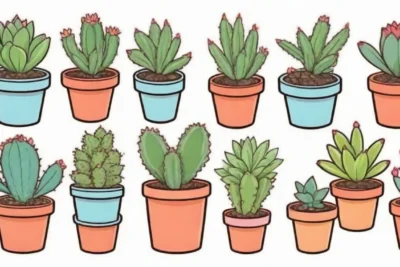
How to Create a Vertical Garden with Indoor Succulents

Introduction
In recent years, the idea of bringing nature indoors has gained popularity, fostering a connection between people and their living environments. One of the most aesthetically pleasing and space-efficient ways to achieve this is by creating a vertical garden. With limited living space in urban environments, vertical gardens serve a dual purpose; they enhance the aesthetic appeal of a room and provide numerous benefits, including improved air quality and enhanced well-being through the presence of greenery.
This article will guide you through the process of creating a vertical garden specifically using indoor succulents. Succulents are perfect for vertical gardens due to their low maintenance, drought-resistant qualities, and stunning variety of shapes and colors. Let's explore how to create a lush vertical space brimming with these beautiful plants.
Understanding the Benefits of Vertical Gardens
Vertical gardens, also known as living walls or green walls, transform indoor areas by offering numerous benefits beyond their visual appeal. Firstly, they can significantly improve air quality within your home. Plants absorb carbon dioxide and release oxygen during photosynthesis, which helps cleanse the air of toxins, making it healthier for your family to breathe. Specifically, succulents are known for their ability to thrive in lower light conditions, which makes them perfect candidates for indoor setups.
Another advantage is the use of space. Traditional gardening can be challenging in apartments or homes with limited outdoor space. Vertical gardens utilize wall space, allowing you to expand your greening efforts without occupying precious floor area. This compact approach can contribute to a cozy and inviting atmosphere, especially in smaller living environments.
Lastly, cultivating a vertical garden can enhance your psychological well-being. Numerous studies suggest that green spaces contribute to reduced stress levels and increased happiness. The visual appeal of succulent arrangements can create a calming environment, making your indoor space more enjoyable and inviting for you and your guests.
Selecting the Right Succulents for Your Vertical Garden
Choosing the right succulents is crucial for the success of your vertical garden. Not all succulents thrive in indoor conditions, so it's essential to select varieties that are easy to care for and suitable for vertical arrangements. Some popular choices include Aloe Vera, Echeveria, Haworthia, and Jade Plants. These species are not only hardy but also possess stunning shapes and colors that can stand out in any arrangement.
When selecting succulents, consider the light levels in the room where you plan to hang your vertical garden. Succulents generally require bright, indirect light, although some can tolerate lower light conditions. Knowing your space's light exposure will help you choose the appropriate plants. For instance, if you have a bright room with direct sunlight, opt for sun-loving varieties. Conversely, if your space is dim, seek out low-light tolerant species.
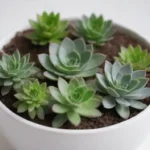 Detoxifying Your Space: Top Indoor Succulents for Clean Air
Detoxifying Your Space: Top Indoor Succulents for Clean AirMoreover, the arrangement of succulents is equally important. Grouping plants with similar care requirements will simplify maintenance and ensure that each plant flourishes. When choosing varieties, think about the textures, colors, and heights of the plants to create an appealing visual contrast. Mix trailing succulents like String of Pearls with more upright varieties for depth and interest.
Preparing the Best Structure for Your Vertical Garden

Creating a vertical garden requires a supportive structure. You can purchase ready-made vertical garden kits that include planters and frames or design one yourself using available materials. The structure should securely hold the weight of the plants and contain a mechanism for allowing soil to drain, preventing overwatering issues.
DIY Vertical Garden Frame Ideas
If you're inclined to DIY, consider using materials like wood or PVC to create a frame. For example, a wooden pallet can be transformed into a rustic vertical garden. To start, ensure the pallet is clean and free of harmful chemicals. You can line the back with landscaping fabric to facilitate drainage while keeping the soil in place.
Another popular option is to use vertical planter boxes mounted on a wall. These boxes can be purchased or constructed from timber and attached securely to the wall. For added interest, you might want to incorporate a few hooks or containers that can hold smaller succulents at varying heights.
Finally, consider a hanging pot system. This approach allows you to use macramé hangers or metal grids to suspend pots at different levels, creating an eye-catching design. Ensure that the materials you use can support the weight of the pots and soil to prevent accidents.
Potting and Arranging Your Succulents
Once you have your structure ready, it’s time for potting and arranging your succulents. The first step is to choose an appropriate potting mix specifically formulated for cacti and succulents. This type of soil offers good drainage properties and prevents root rot, which is critical for succulent health.
 Tending to Indoor Succulents During the Dry Winter Months
Tending to Indoor Succulents During the Dry Winter MonthsWhen planting, carefully remove the succulents from their containers and gently loosen the roots if they appear crowded. Fill your vertical planter or chosen structure with soil and create small wells to accommodate the roots of each succulent. Take care not to bury the plants too deep; the tops of the plants should rest above the soil line to avoid moisture retention around the stems.
Creative Arranging Techniques
Consider the overall design when arranging your succulents. Placing larger varieties or those with more striking colors at the bottom creates a solid foundation. Ascend in size as you move upward, ensuring that the arrangement remains visually balanced. You can also experiment with layering and interplanting techniques, integrating varied textures like the smooth leaves of Sedum with the sharp edges of Agave, adding to the garden's visual interest.
As you arrange your succulents, don’t be afraid to play around with different styles. Inspiration can be found in nature, art, and even the geometric shapes prevalent in contemporary designs. Try creating a drip line with trailing succulents that cascade downwards or cluster smaller varieties in a mosaic-like fashion for dramatic effect.
Watering and Maintenance of Your Vertical Garden
Proper maintenance is essential to the success of your vertical garden. Since succulents are drought-tolerant, they need less watering than traditional plants. Generally, you should water your silk plants every two to three weeks, depending on the humidity of your space and the time of year. During warmer months, you may need to increase the frequency slightly, while cooler months may require less.
One effective method for watering succulents in a vertical garden is to use a watering can with a long spout, allowing you to target the soil without wetting the leaves too much. Bottom watering can also be beneficial; this involves placing the entire planter in a shallow container of water, allowing the soil to absorb moisture from the bottom. This technique encourages deeper root growth and helps avoid rot.
Responsible Pest Management
Regularly inspect your vertical garden for pests like aphids and mealybugs. These common houseplant pests can attack succulents, leading to unhealthy plants. A straightforward preventive measure is to keep your garden clean and remove any dead leaves or debris that may attract pests. If an infestation occurs, treat with insecticidal soap or neem oil to protect your plants without harming the environment.
Don't forget about fertilization! While succulents don't require much feeding, a diluted liquid fertilizer during the growing season can provide a boost. Feed them only during active growth periods; generally, this is from spring until early autumn.
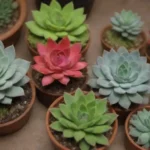 Combining Indoor Succulents with Other Houseplants for Unique Looks
Combining Indoor Succulents with Other Houseplants for Unique LooksConclusion
Creating a vertical garden with indoor succulents is an enjoyable and rewarding endeavor that brings life and vibrancy into your home environment. By carefully selecting the right succulents, preparing a sturdy structure, arranging plants thoughtfully, and maintaining them diligently, you can achieve a stunning indoor oasis that not only enhances your home’s aesthetics but also promotes a healthier lifestyle.
The presence of succulents serves as a reminder of nature’s beauty and resilience. With the ongoing trend toward biophilic design, which emphasizes the connection between people and nature, your vertical garden reflects a modern understanding of well-being and environmental consciousness. Embrace this exciting project, gather your materials, and let your creativity flourish as you craft your very own vertical garden sanctuary.
So whether you’re an experienced gardener or a complete beginner, you can create a vertical garden that complements your home’s style while providing a burst of life and color. With patience and practice, your indoor succulents will thrive and transform your space into a beautiful vertical garden that you can enjoy for many years to come. Happy gardening!
If you want to read more articles similar to How to Create a Vertical Garden with Indoor Succulents, you can visit the Indoor succulents category.

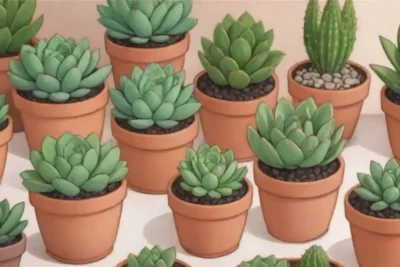
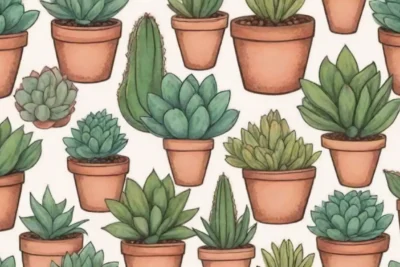
You Must Read